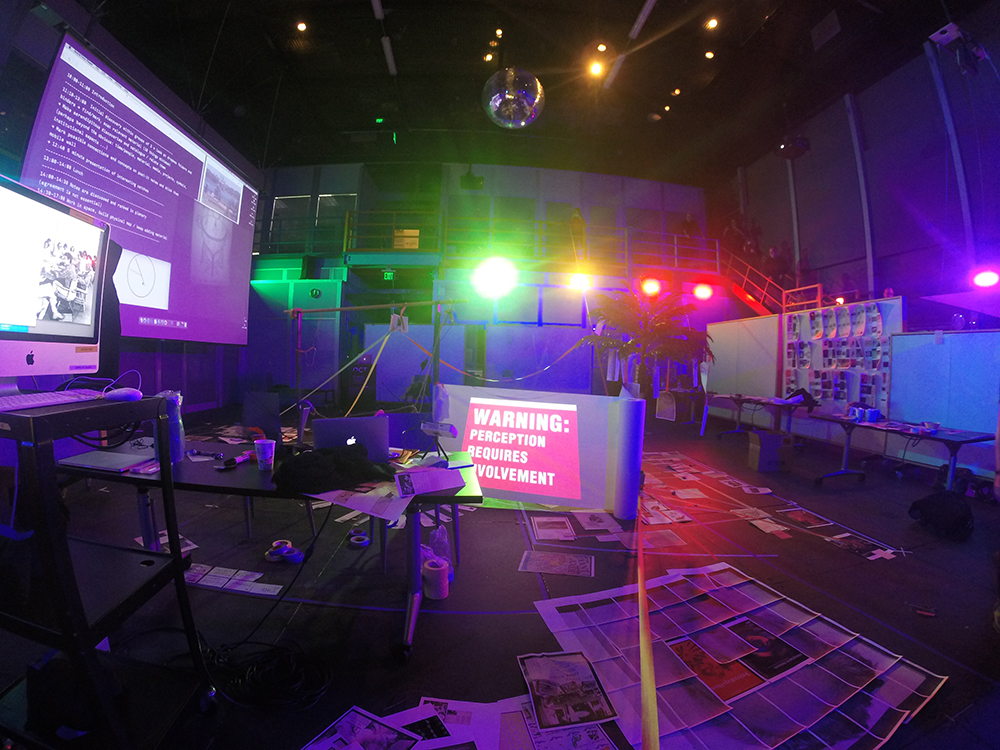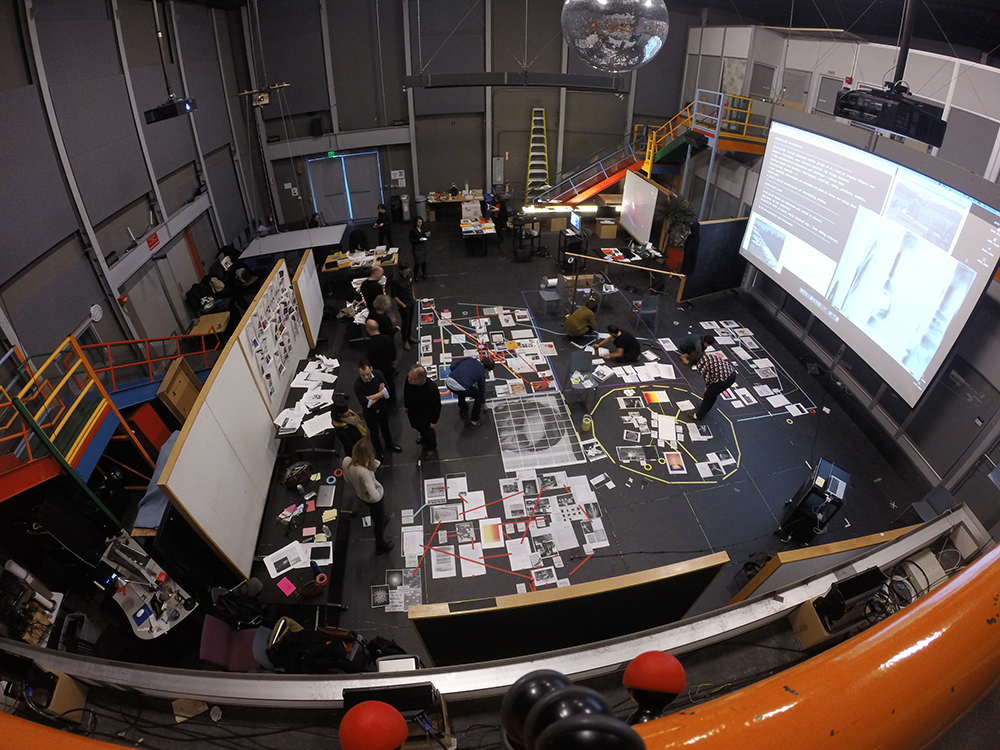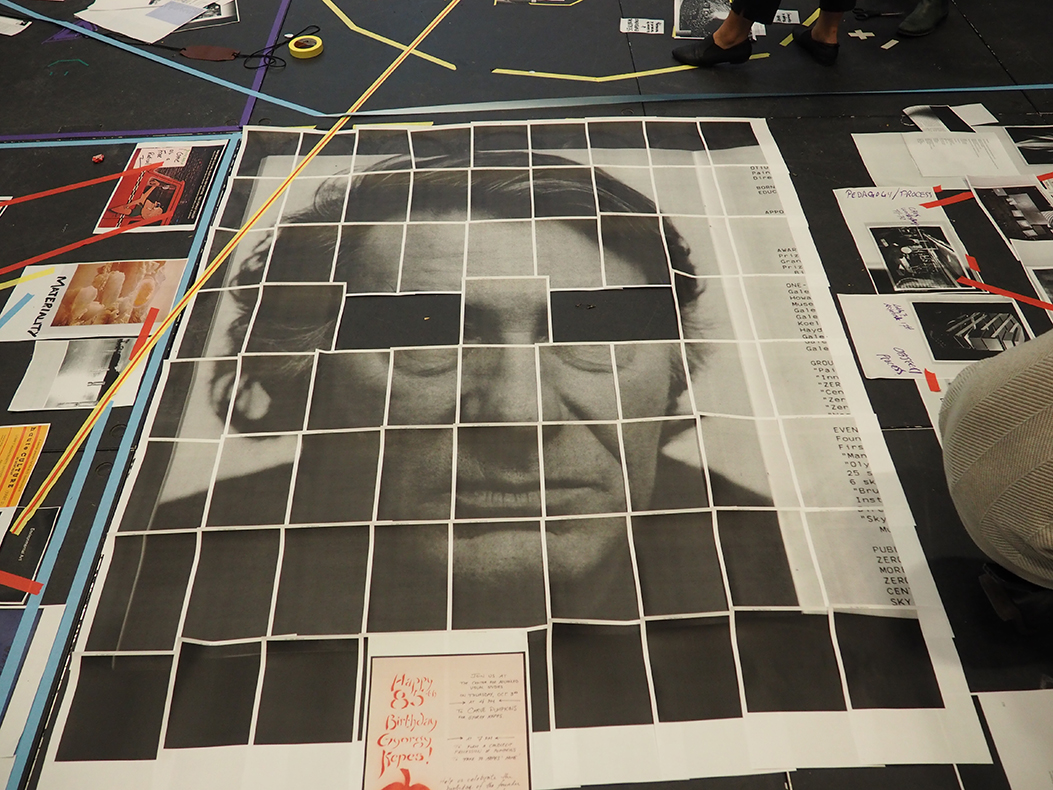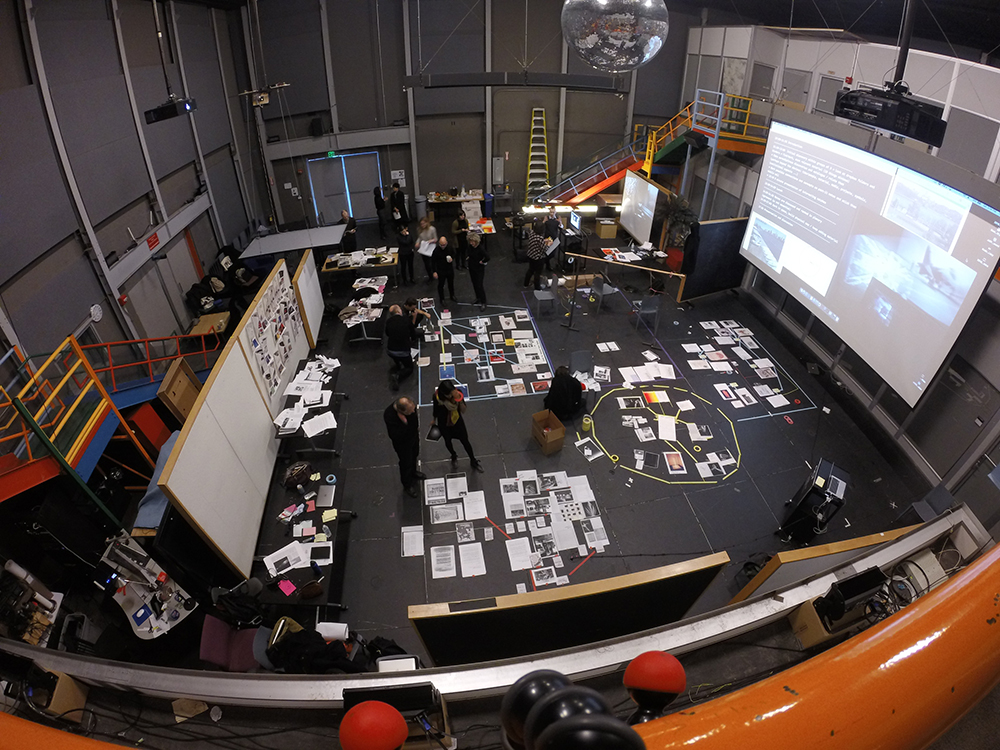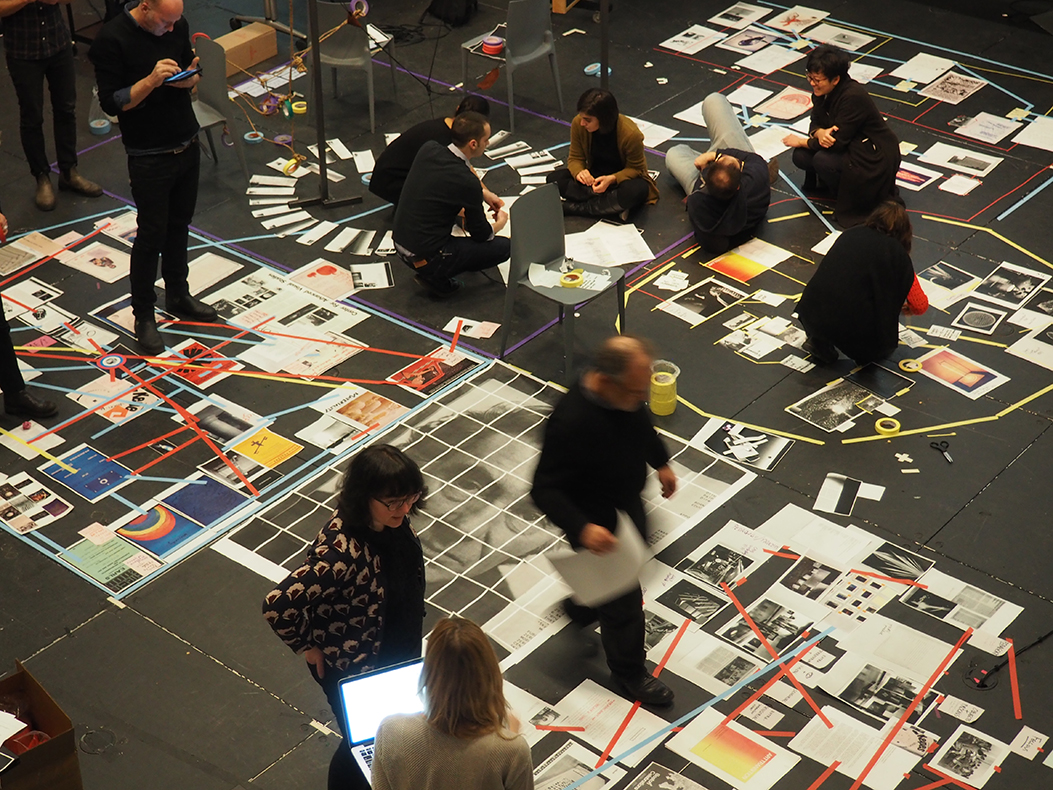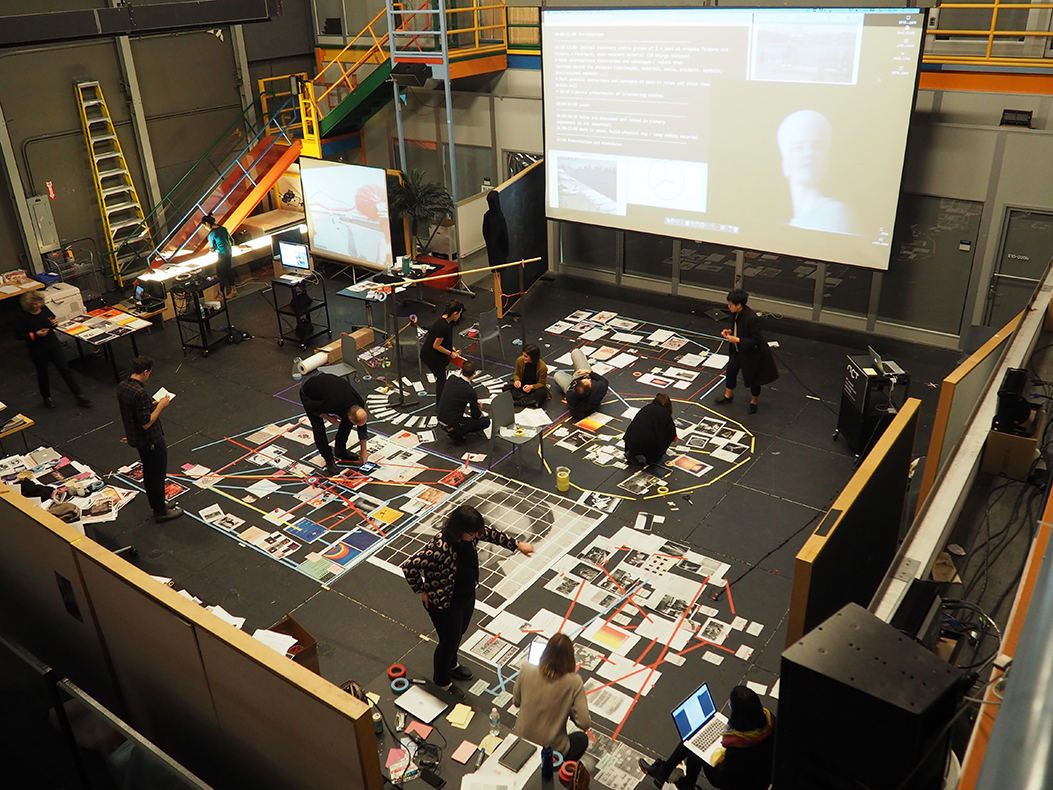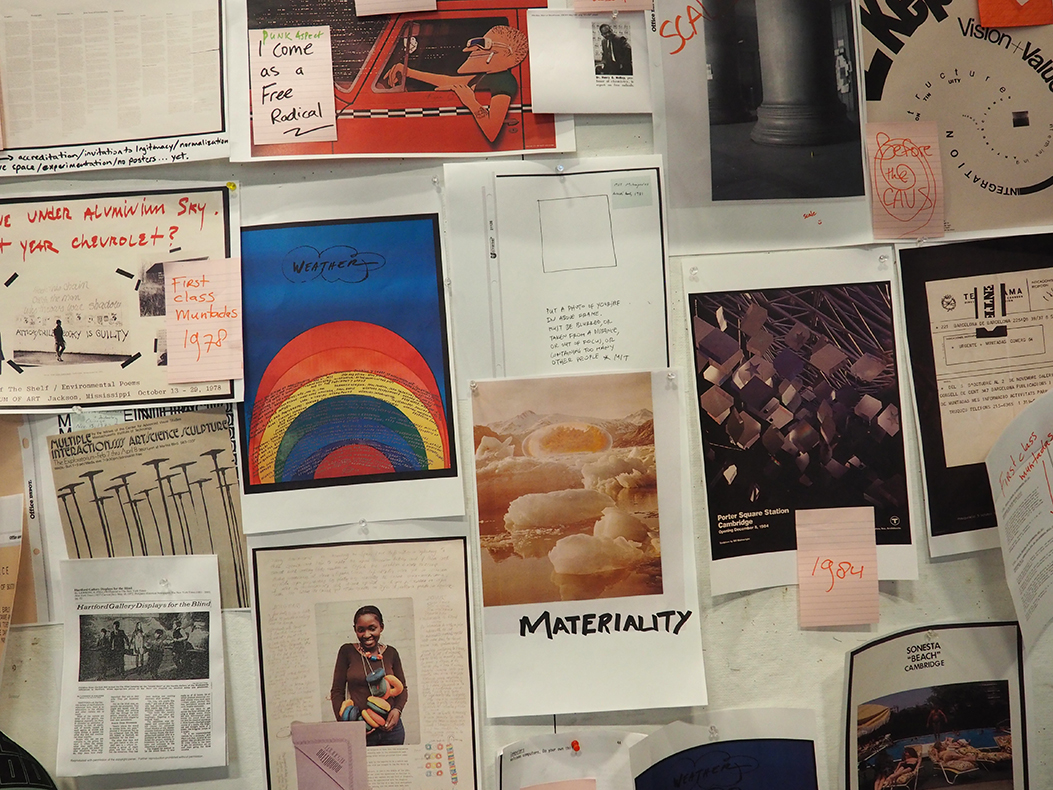Now that new media has freed us from the tyranny of print, we can experiment with multiple publishing platforms to collect and disseminate texts and other cultural artifacts. “On the Record,” a series of programs focused on the public side of publishing and research, began with an investigation of a significant archive at MIT—that of the Center for Advanced Visual Studies (CAVS). Thanks to an NEA Art Works grant, designers from NODE Berlin Oslo and Bengler will create a digital repository of this collection that will be publicly accessible, visually engaging and interactive.
The CAVS Special Collection, maintained by the Program in Art, Culture, and Technology (ACT), is the repository of a nearly 45-year history of collaborative and time-based productions of over 200 internationally recognized artist-fellows. It includes photographs, books, posters, artists’ prints, documents, portfolios, films, video and audio tapes from such prominent artists as György Kepes, Charlotte Moorman, Antoni Muntadas, Nam June Paik, Otto Piene, Yvonne Rainer, Krzysztof Wodiczko, and Vito Acconci.
Serge Rompza of NODE and Even Westvang of Bengler, together with ACT archivist Jeremy Grubman, led an an intensive one-day workshop in which participants mined this collection to explore connections between its diverse materials. Grubman says that attendees “were participants in a social experiment” that “aimed to better understand how users from different backgrounds approach research in this collection.”
Part of the challenge of the workshop was visualizing in physical form what a digital repository looks like, and part of the challenge of creating a digital repository is visually representing the physical materials. Westvang believes that “craft and a proximity to material qualities are highly relevant when making things for digital media.” To that end, they strived to make the workshop bridge the digital-physical divide. Participants were invited to sift through binders of correspondence, posters, photographs and slides, and to photocopy items, simulating the endless replication possible in the digital realm. These copies formed the basis of a vibrant installation of archival materials, linked across user-generated categories with colored tape.
According to Grubman, “What was gained in the workshop was an understanding of some of the questions that get raised when people start looking at things—not even doing in-depth research but just looking at a picture or a poster, what questions do people immediately ask.” With so much striking visual material in the collection, he points out many patrons—particularly artists who are looking for inspiration for their own work—come in without a fully-formed research question. For many, questions get raised through serendipitous encounters with the materials.
“In a visual arts repository, you want your users to see a lot of materials without necessarily searching for it,” Grubman states. The workshop gave him, Rompza and Westvang insights into this kind of patron. Grubman explains: “We wanted to know, for instance, what architects ask? What connections do people find? We got interesting things that we couldn’t anticipate. We had an archivist use library-standard descriptive terms, but we had another participant using Greek myths as a way of categorizing materials.”
One feature of the physical workshop that NODE and Bengler will import into the digital repository is transparency—albeit with a layer of privacy. Just as participants witnessed each other’s thought process as they selected items to copy and link, researchers using the digital repository will be able to see other users’ annotations and suggestions. This sort of curated, crowdsourced content will be especially valuable in instances where the artists and authors of various materials weigh in on projects they developed at MIT.
Grubman points out, “These layers are tools that are going to arm users with more information about how collection materials are interconnected, but it is also going to inform us about how people are using the site, what records they find valuable and how frequently they are used. It is also an evaluative tool, which is enormously useful.” On the more philosophical level, transmission of knowledge is often this ephemeral hard-to-calculate thing. Scholars can look at annotated copies of books to glimpse what its owner might have thought, or investigate what volumes were in someone’s library to guess their influences, or trace a trail of footnotes in a text to get inside an author’s head. With this digital collection, researchers can share their insights, add meaning and pose new questions, as they make visible the liveliness and currency of the archive.
About NODE and Bengler
NODE, a Berlin- and Oslo-based design studio founded in 2003 by Anders Hofgaard and Serge Rompza, works collaboratively across various media for a diverse range of clients from individuals to institutions, focusing on print, identity, exhibition and interactive work. Bengler produces television programs, museum exhibitions and public artworks and designs and builds social publishing systems and data visualizations.
About the CAVS Digital Archive
Funded by an NEA Art Works grant, this project is a collaboration between ACT Director Gediminas Urbonas (principal investigator), ACT’s Archivist Jeremy Grubman, and information design specialists NODE Berlin Oslo and Bengler. The workshop was conceived in part by Irina Chernyakova. The CAVS online repository is scheduled for completion in summer 2017.

